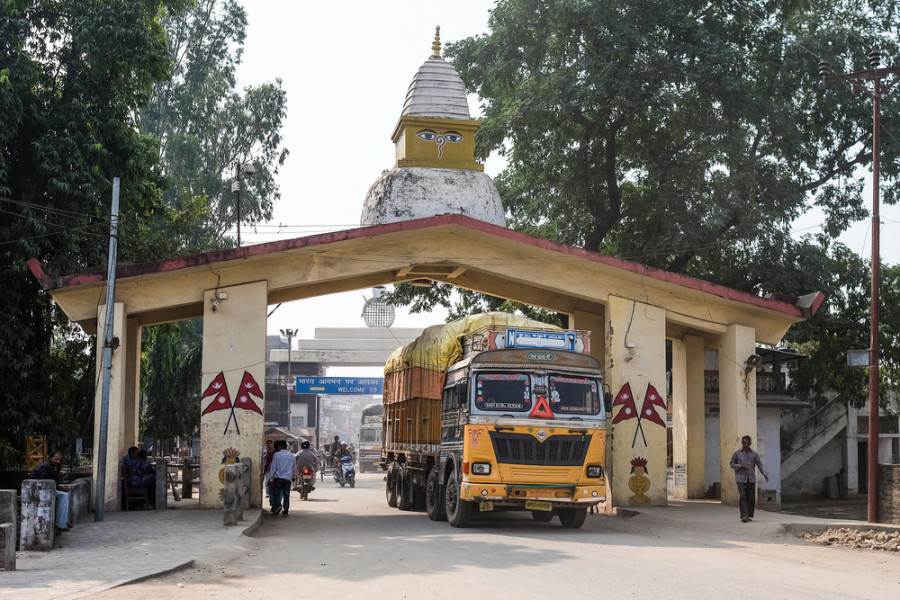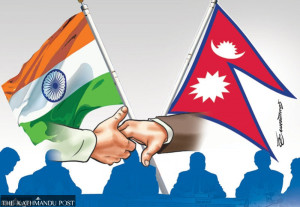Columns
Exports post-LDC graduation
Nepal needs to act smartly by utilising modern technology to adopt a data-driven export policy.
Sagar Jung Karki
The continuous trade deficit is not a new phenomenon in Nepal. However, the ever-decreasing export is a concern that is often neglected by civil society, government and other stakeholders. According to the data provided by the Department of Customs, during the first month of the current fiscal year 2022-23, Nepal faced a trade deficit of Rs116.47 billion. What is more interesting is that exports saw a larger decrease of 28.68 percent than imports which fell by 12.9 percent when compared to the first month of the previous fiscal year. This downward trend in exports and uphill drift of imports has been occurring for many years but has worsened after the coronavirus pandemic. The data shows a gloomy picture of Nepal’s export, especially as the country is preparing for graduation from the least developed country (LDC) status to a middle-income developing country by 2026.
Exports are vital for any economy to gain foreign currency, create jobs and utilise its comparative advantages. A study conducted by the International Trade Centre, a joint agency of the United Nations and the World Trade Organisation that facilitates providing trade-related data and information, forecasts that when Nepal graduates from LDC status, it might lose its preferential access to several developed and emerging markets which it is currently enjoying under the generalised system of preferences (GSP) scheme for LDCs. The subsequent removal of the preferential tariffs for Nepal’s exports could mean a loss of 4.3 percent of exports that can further jeopardise the current situation of the trade deficit. However, this issue can be addressed if the government and relevant stakeholders act proactively on various fronts.
Data-driven exports
To better prepare for LDC graduation, Nepal needs to act smartly by utilising modern tools and technology to adopt a data-driven export policy. The International Trade Centre has developed tools such as trade map, market access map, export potential map and rule of origin facilitator. The government needs to inform and train exporters to use these tools because many are still not aware of them. By using these tools, small and medium enterprise exporters, government agencies such as the Trade and Export Promotion Centre and researchers can get the latest trade statistics, relevant tariff and non-tariff measures, export potential, trade agreements and rules of origin.
These data and information can be collected for a particular export product or a particular export country as required. For instance, a pashmina exporter can check out the latest data and information on the largest importing countries of pashmina, the export potential of pashmina from Nepal to those countries, the tariff rates and the relevant rules and regulations to export. Furthermore, exports should not be limited to commodities but needs to be diversified to include services such as financial, human resources, information technology and management support based in Nepal and provide services to clients from other countries.
Export infrastructures refer to transportation, energy and communications that are crucial for increasing the export competitiveness of countries. In Nepal, a problem that is more prevalent than lack of investment is timely completion and regular maintenance of key highways and infrastructure projects such as the Kathmandu-Tarai Fast Track, which was originally scheduled to be completed by September 2021, but postponed until 2024. Furthermore, uninterrupted electricity and telecommunications services to export-oriented business are also essential for enhancing exports. Expanding road networks leading to the borders and leveraging the port infrastructures of both India and China is a must to ensure maximum exports of commodities. For this, Nepal needs to build and maintain roads and dry ports and also ensure that the border is open and functional by coordinating with the authorities on the other side. Expanding domestic production capabilities is also required as Nepal’s current exports may need to be drastically increased if it wants to continue exporting post-graduation.
Flow of goods
When giving subsidies and loans, the government should provide additional benefits to export-oriented small and medium enterprises. One of the key obstacles that exporters face is lack of modern labs for sanitary and phytosanitary testing that are required as part of non-tariff measures. Many exporters, especially of agricultural commodities, have to send the samples to be tested in India or other countries. The time and cost for getting documents for exporting such as certificate of origin, Exim code, and letter of credit should be reduced to encourage exporters. Removing bureaucratic hassles is a must to encourage them.
A major impediment to exporting in a landlocked country like Nepal is lack of seaports. Bilateral and regional agreements with neighbours might need to be revisited for better access to the ports so that the export items can be transported. For Nepal, without the cooperation of India or China, it is not possible to export. Therefore, maintaining a good relationship with the neighbouring countries guarantees smooth flow of goods across borders.
Nepal’s graduation from LDC status has been long-awaited, however, it needs to be ready to embrace the consequences for which we can also learn from countries that have in the past graduated from LDC. This is also true for exports which are a vital contributor to the economy. The government and non-government agencies need to give particular attention to what is going to happen to Nepal’s exports post-graduation, and act accordingly. Otherwise, Nepal’s export trade post-graduation might be one that glitters but is not gold.




 18.12°C Kathmandu
18.12°C Kathmandu















